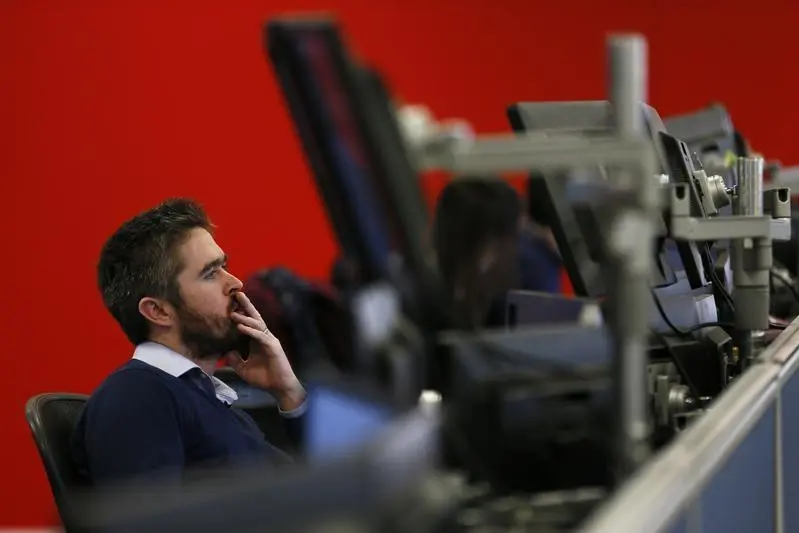PHOTO
LONDON - The recent surge in market volatility, by some measures one of the most dramatic on record, will have zero impact on investor returns beyond a few months. Literally zero.
That's according to Credit Suisse's annual Global Investment Returns Outlook, a 250-page tome analyzing world investment trends since 1900, as close to a bible on long-term market patterns as you're likely to find.
Their advice is to hold on tight, sit out the current turbulence and watch stocks resume the uptrend that has seen them consistently outperform bonds and cash on average over the last 118 years.
In fact, the turbulence that wiped $4 trillion off the value of world stocks earlier this month is already fading. The study found that it took only seven trading days for the VIX index to revert back to the mean following this year's "February funk".
That's the quickest implied U.S. stock market volatility has reverted to the mean of all 13 crisis-fueled spurts since 1986, the study finds. The average is 92 trading days.
The long-term average rate for the VIX, also dubbed Wall Street's "fear index", is 20 percent. For months it had been anchored at record lows around and below 10 percent. According to the report, 2017 was the 5th calmest year on record.
But on Feb. 5 the VIX had its biggest one-day rise ever, popping above 50 percent for only the second time since the 2008 crisis.
World stocks lost 10 percent and suddenly, it looked like the post-crisis "Goldilocks" world of Teflon markets and ultra-low volatility might be coming to an end. But history suggests otherwise, the Credit Suisse study finds.
Jumps in implied volatility are a decent predictor of actual volatility over the coming one, two or maybe even three months, but nothing beyond that. Literally.
"Volatility is a reminder that equities are risky ... but you shouldn't really read too much into volatility changes," said Paul Marsh, one of the report's co-authors. "The VIX doesn't predict returns."
The study shows that the relationship between next year's equity returns and last week's VIX changes is non-existent. The statistical measure of this is called "R-squared", where 0 shows no correlation and 1 is a perfect, 100 percent fit.
"This is the first regression (analysis) I think any of us have ever done when we got an R-squared of 0.000, i.e, nothing there. Nothing," Marsh said.
There have been 197 episodes since 1986 where the VIX has risen at least 20 percent from the previous week, 87 where it has risen at least 30 percent, 46 where it has risen at least 40 percent and 22 where it has risen at least 50 percent.
The subsequent one-year U.S. stock market returns have been 12.6 percent, 10.8 percent, 10.2 percent and 12.5 percent, respectively, the report finds.
Investors should maybe keep this in mind when volatility suddenly appears, although as Marsh notes, their instinctive reaction is to run for cover. This is exactly what happened earlier this month when mutual fund investors pulled a record $30.6 billion out of world equity funds in the week to Feb. 7, according to Bank of America Merrill Lynch.
If you're in it for the long haul, however, equities are a relatively good bet compared to bonds or cash, although that doesn't mean rates of return will increase in the coming years. In fact, low real interest rates should depress returns.
Since 1900, equities have outperformed bonds and cash in every one of the 22 countries tracked in the study. World stocks' annualized real return has been 5.2 percent a year since 1900, compared with around 2 percent for bonds and 0.9 percent for cash.
The equity risk premium (real equity return less real cash return) since 1900 has averaged around 4.3 percent. But for the next 20 years that will shrink to around 3.5 percent, the study finds.
"When real interest rates are low, so are expected returns," the report notes.
(Reporting by Jamie McGeever; Editing by Raissa Kasolowsky)
© Reuters News 2018












